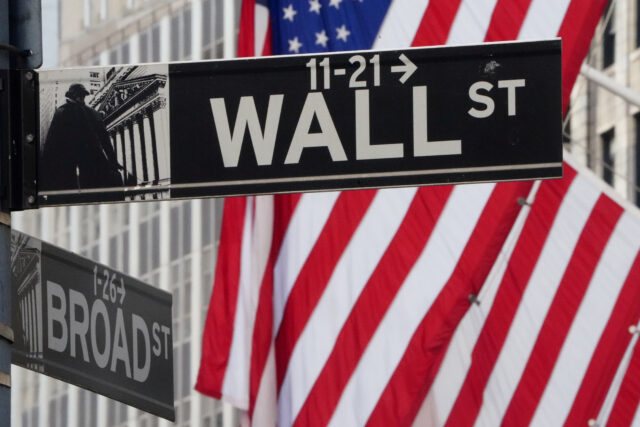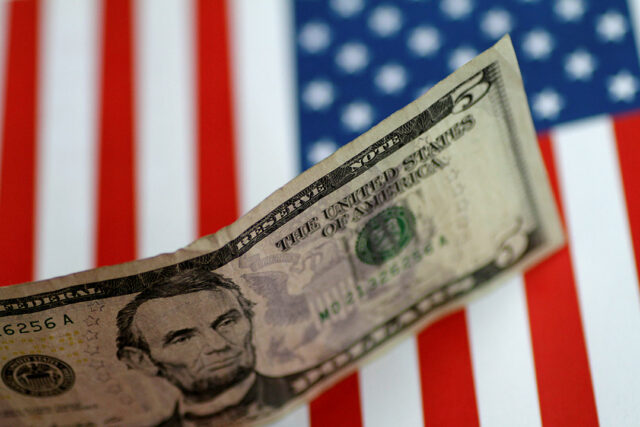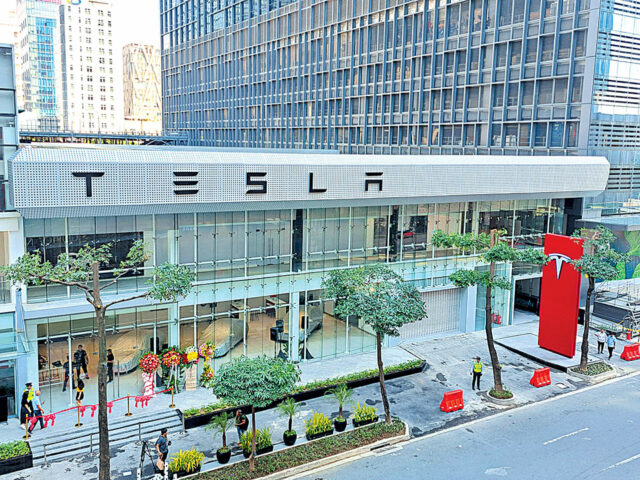WASHINGTON – The US economy contracted for the first time in three years in the first quarter, swamped by a flood of imports as businesses raced to avoid higher costs from tariffs and underscoring the disruptive nature of President Donald Trump’s often chaotic trade policy.
The Commerce Department’s advance gross domestic product (GDP) report on Wednesday, however, grossly exaggerated the economy’s fading prospects. Though consumer spending slowed considerably from the fourth quarter, the pace of growth remained healthy. Businesses also boosted investment in equipment, mostly information processing and transportation.
Nonetheless, both consumer and business spending likely reflected front-loading before the import duties kicked in. As such, the report reinforced Americans’ growing disapproval of Trump’s handling of the economy as he marks 100 days in office.
Mr. Trump swept to victory last November on voter angst over the economy, especially inflation. Consumer confidence is near five-year lows and business sentiment has tanked, while airlines have pulled their 2025 financial forecasts, citing uncertainty over spending on nonessential travel because of tariffs, which economists said will raise costs for companies and households.
Economists anticipated the economy would rebound in the second quarter as the drag from imports fades, but probably not enough to avoid a recession or a period of tepid growth and high inflation, commonly referred to as stagflation. Resolving the uncertainty caused by the Trump administration’s ever-shifting tariffs position was crucial, they said.
“If the blowout on trade was the result of firms pre-buying imported inputs to beat the tariffs, the decay in the trade balance will reverse in second quarter,” said Carl Weinberg, chief economist at High Frequency Economics. “That will generate some GDP growth.
However, corrosive uncertainty and higher taxes – tariffs are a tax on imports – will drag GDP growth back into the red by the end of this year.”Gross domestic product decreased at a 0.3% annualized rate last quarter, the first decline since the first quarter of 2022, the Commerce Department’s Bureau of Economic Analysis said in its advance estimate of first-quarter GDP.
It was also weighed down by a decline in federal government spending, likely linked to the White House’s aggressive funding cuts, marked by mass firings and shuttering of programs.
The report captured activity before Trump’s “Liberation Day” tariffs announcement, which ushered in sweeping duties on most imports from the United States’ trade partners, including jacking up duties on Chinese goods to 145%, sparking a trade war with Beijing.
Mr. Trump and his aides struggled to coalesce around a message about the GDP number.
Mr. Trump blamed former President Joe Biden for the weak GDP and sought to highlight strong domestic demand, including the rebound in business spending as outlays on equipment surged at a 22.5% rate.
“We had numbers that despite what we were handed, we turned them around,” Mr. Trump said at the White House.
Final sales to private domestic purchasers, which exclude trade, inventories and government spending, grew at a solid 3.0% rate. But this measure of domestic demand, which Trump also referred to, also was distorted by tariffs. Domestic demand was strong during the last year of the Biden administration, growing at a brisk 2.9% clip in the October-December quarter.
Senate Democratic Leader Chuck Schumer in a statement accused Trump of running the country into the ground.
“Donald Trump must admit his failure and reverse course, and immediately fire his economic team,” Schumer said.
Economists polled by Reuters had forecast that GDP increased at a 0.3% pace in the January-March period.
The survey was, however, concluded before data on Tuesday showed the goods trade deficit surged to an all-time high in March amid record imports, which prompted most economists to sharply downgrade their GDP estimates. The economy grew at a 2.4% pace in the fourth quarter.
Stocks on Wall Street were trading lower. The dollar rose against a basket of currencies. US Treasury yields fell.
RECORD IMPORT DRAG
Imports jumped at a 41.3% rate, the largest rise since the third quarter of 2020, when the nation was in the throes of the COVID-19 pandemic, which fractured global supply chains. That obliterated a modest rise in exports, resulting in a large trade gap that chopped off a record 4.83 percentage points from GDP.
Imports were driven by both consumer and capital goods. The BEA said it had identified and removed an increase in imports of silver bars as a form of investment in the first quarter.
Transactions in valuables such as nonmonetary gold and silver are not treated as investments and therefore purchases of these metals are not included in consumer spending, private domestic investment or government spending, it said.
An unusually large amount of non-monetary gold accounted for some of the jump in imports in the past months, leading to a wide disparity in first-quarter GDP estimates.
Some of the imports ended up as inventory in warehouses, partially blunting the hit to GDP. Inventory accumulation surged at a $140.1 billion pace after rising moderately in the October-December quarter. Inventories added 2.25 percentage points to GDP after being a drag for two straight quarters.
The strong inventory build last quarter could be a headwind to GDP this year, especially as the front-running of purchases ends. A slowing labor market and wage growth as well as worries about the economy could also prompt households to hunker down.
A separate report from the Labor Department’s Bureau of Labor Statistics showed wages and salaries climbed 0.8% in the first quarter after rising 1.0% in the October-December quarter.
Inflation heated up last quarter, but cooled in March. The Personal Consumption Expenditures price index excluding the volatile food and energy components was unchanged in March after surging 0.5% in February.
Economists said the reports would encourage the Federal Reserve to keep interest rates unchanged next week.
“Weak GDP … was still a stagflation warning shot over the bow of the economy,” said Ellen Zentner, chief economic strategist at Morgan Stanley Wealth Management. “This type of data won’t soothe the markets, and it won’t make the Fed’s job any easier.”
Consumer spending, which accounts for more than two-thirds of the economy, grew at a 1.8% rate after a robust 4.0% pace in the fourth quarter. It was supported by outlays on both services and goods, mostly healthcare, housing and nondurable goods.
Most of the growth was in March, with spending surging 0.7% as households pulled forward purchases of motor vehicles. Economists expected the pre-emptive buying persisted in April.
“At the moment, most stores are still selling inventory that would have entered the country before Liberation Day and thus may not reflect the price hikes that will be coming soon,” said Stephen Stanley, chief economist at Santander US Capital Markets. – Reuters












